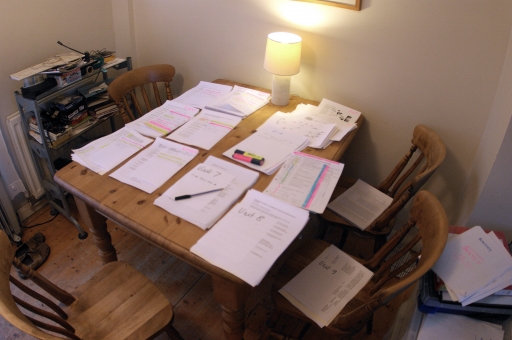Read pp. 3–8 of Hammersley’s paper, up to the heading ‘Context as virtual’. Identify the ways in which Hammersley talks about context and, in particular, what he identifies as ethnographic understandings of context.
In Week 8 context was identified as an issue in research methods generally. How do you think Hammersley addresses the issues concerning context raised in Week 8?
The point made introducing Activity 8.3 is that ‘ Crook and Dymott (2005) adopt a different theoretical approach to learning and context. Hence their research adopts different methodologies compared to the studies discussed by Tolmie.
From Tolmie (2001). Surroundings mean different things to different people. It is naive and deterministic to think that people are so easily governed by their context. The individual over the surroundings. Unless we think students are like a uniform tribal grouping.
‘They are necessarily employed within pre-existing contexts of educational and social activity’. Tolmie (2001) But such ‘contexts’ are or have been radically overhauled, take ESSA in Manchester by way of example. Both how and where the students and teachers interact matters. Rather like product design - form and function. The two are complimentary.
Crook and Dymott (2005) seem focused on the interaction between the various media of life, in particular written texts, lectures and social interactions affect the manner in which we think and express that thinking. Writing to me is a function of the communicating clusters in our brain and will produce the similar ‘comprehension’ results whether cunieform on clay, hieroglyphys on stone, handwriting on papyrus, printing on paper, text on a screen or an annotated animation in a video. The way the brain interlinks with other parts of the brain, and does so in different ways every time a fact is remembered will differ. An item listed on clay will be associated with the act of tapping a hammer into the clay, or an idea expressed via a QWERTY keyboards and printed off might recall the smell of the printer ink .. but does the kernel of the thought differ? To what degree is context the wrapping and associations rather than the information itself?
Learning is both an artefact and a process - the artefact exists as a potential in the brain and when stimulated can in part, through the complexity, be seen in a fMRI scan. The process of learning takes place as an interaction with the world around us, more people, but also the context and ours.
From the recorded memoirs of my late grandfather Jack Wilson, (Vernon, 2008) I wonder how, as an office boy age 14-18 he responded or changed to going from a ‘copy writer’ using 'copying ink' and using carbon paper to using the Blickenfurentstater typewriter that was brought round to the office one morning … and handed to him to master. It intrigues me that even a hundred years ago one generation might hand ‘new technology’ to the youngest member of the team or group … as if we expect the youthful mind and attitude to be more plastic? He lived through a period of extraordinary change - first motorcars, typewriters, telephones, aeroplanes … ‘total war’ … part and parcel (his expression) of these technological innovations were changes in society, not least caused by the First World War. Yet in all of this I can’t see how the context can be isolated from the far more significant influence of the person as an individual or in their community … that historically calamitous events and physical change to the environment fail to have a profound effect, collectively, on who or what we are as humans. Was it Prof. Robert Winston who said that Homo Sapiens doing Cave Paintings has more, not less, in common with a concert pianist in the 20th century? I do rather think that the capacity and scope of the human brain rather outweighs context.
Is context a red herring? Would it not be more interesting to understand what is going on in the brain of the person? That internal ‘context’ is surely where the ‘action’ i.e. the learning and memory formation, is taking place?
REFERENCE
Crook, C. and Dymott, R. (2005) ‘ICT and the literacy practices of student writing’ in Monteith, M. (ed.) Teaching Secondary School Literacies with ICT, Maidenhead, Open University Press.
Tolmie, A. (2001), Examining learning in relation to the contexts of use of ICT. Journal of Computer Assisted Learning, 17: 235–241. doi: 10.1046/j.0266-4909.2001.00178.
Vernon, J.F (2008) That’s Nothing Compared to Passchendaele (accaessed 9th May 2013. http://machineguncorps.com/)




